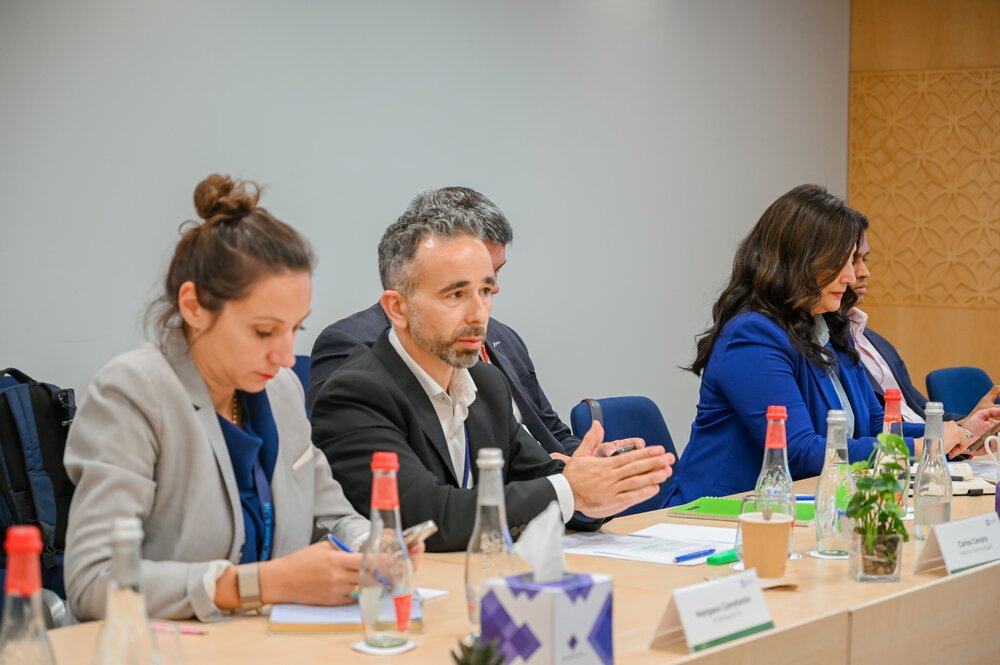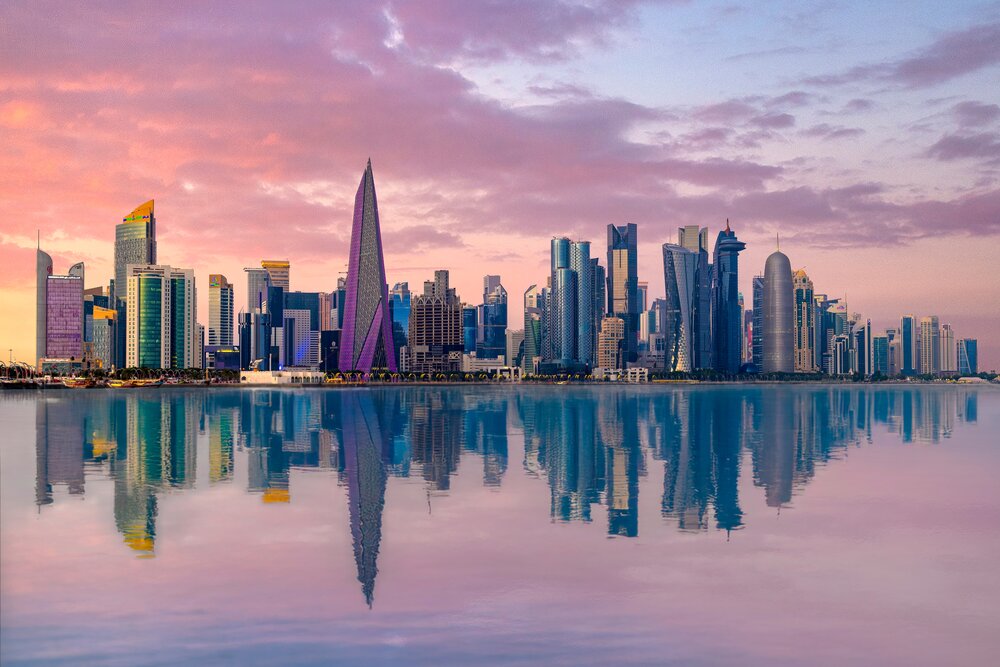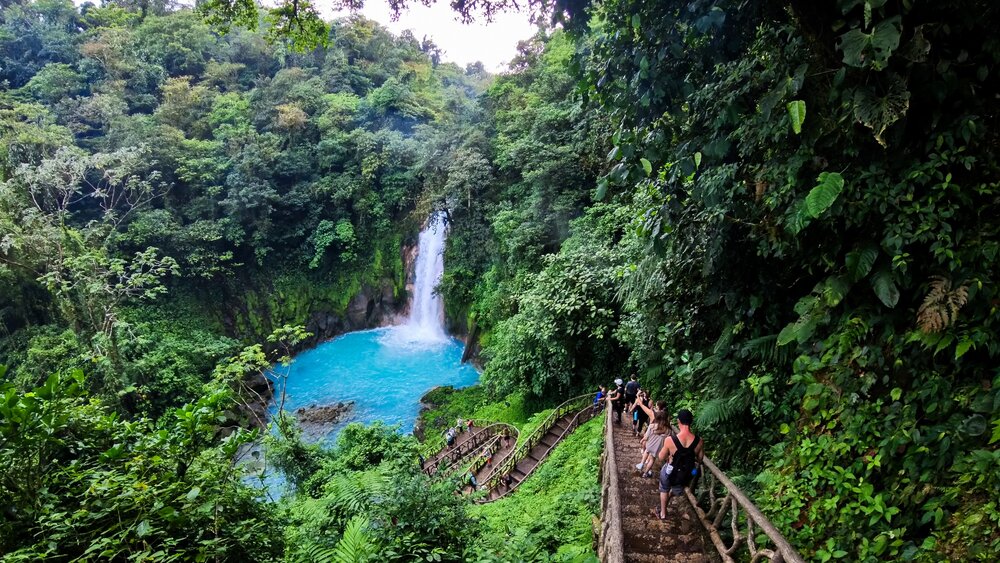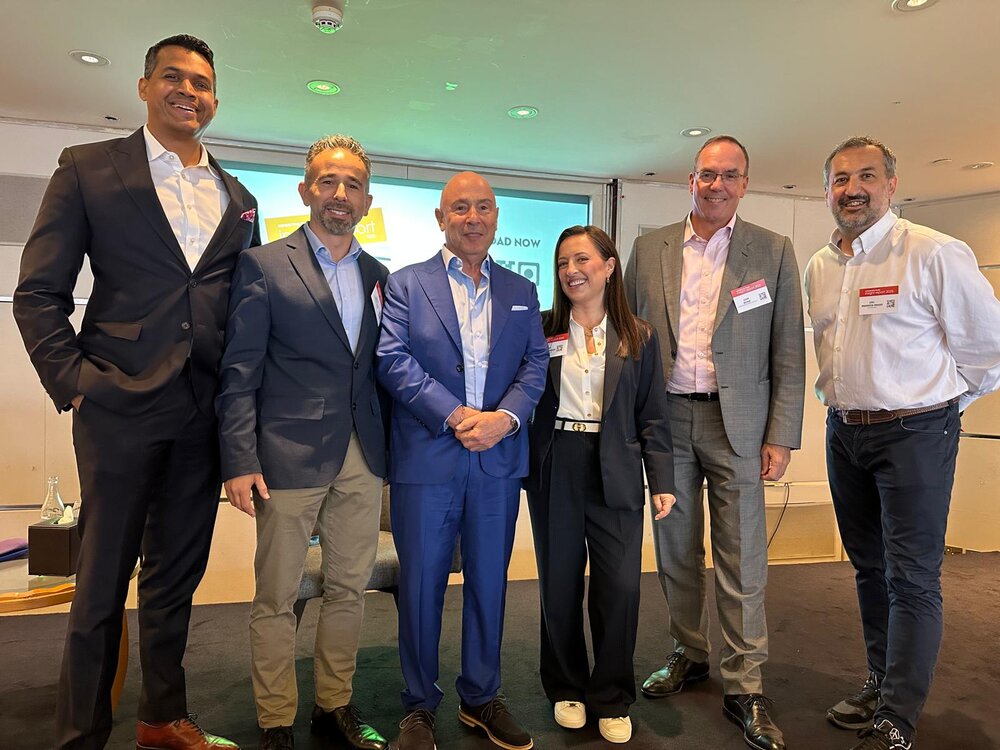How contextual and competitive intelligence can inform successful decision-making
Mabrian, one of the world’s leading providers of travel and tourism data intelligence, helps industry executives in the sector make smarter, more informed decisions.
As data partner for the 2025 Connecting Travel Insight Report, recently launched at Arabian Travel Market (ATM), Mabrian’s in-depth analysis helped identify key trends shaping the GCC tourism landscape and provided actionable insights.
Here, Carlos Cendra, Partner and Director of Marketing and Communications at Mabrian, shares his views on the importance of data intelligence in travel and tourism and the role of artificial intelligence, now and in the future.
CONNECTING TRAVEL: Can you share an overview of Mabrian’s core services to the travel and tourism sector?
CARLOS CEDRA: As the leading global data intelligence and advisory company specialised in travel and tourism, we provide up-to-date, contextual, predictive and insightful data intelligence for strategic and business development, as well as for policy and decision-making. We empower destinations to anticipate demand, align their offerings and navigate disruption with confidence. By turning complexity into clarity through predictive analytics, we help tourism leaders across the Middle East and beyond build smarter, more resilient and more competitive strategies, driving sustainable growth well beyond traditional models.
CT: How does Mabrian differentiate itself from other data intelligence providers?
CC: We provide the most comprehensive data intelligence solution in travel and tourism. Our holistic monitoring centre traces, measures and cross-analyses the full traveller journey, from air connectivity and demand, hotels, holiday rentals, to traveller sentiment, spending patterns and behaviour, and sustainability.
Another key differentiator is our Insights & Tourism Advisory team, a seasoned group of experts in data intelligence, and travel and tourism, who help our customers make sense of data for their particular priorities. We harness the power of AI and data intelligence with a deep travel and tourism perspective.
 Carlos Cendra, Director of Marketing and Communications at Mabrian
Carlos Cendra, Director of Marketing and Communications at Mabrian
CT: How might a destination use your services?
CC: Our main role is helping destinations add contextual and competitive intelligence information to the decision-making process and we are currently aiding in day-to-day operations and strategic decision-making to more than 130 clients across more than 900 destinations worldwide. Our tourism intelligence platform offers daily access to insights derived from 400 indicators, covering all existing markets and segments.
By combining big data and AI techniques, simultaneous insights from more than 30 global data sources and the comprehensive tourism expertise of our team, we are able to identify and assess tourism dynamics and trends on Mabrian's intelligence platform.
The platform offers actionable information and supports the strategic vision for the development, promotion and tourism management of each destination, including projects and initiatives to attract investment, build a brand reputation, identify target markets and segments, enhance air connectivity, monitor visitor experience and set competitive and sustainability analysis.
Mabrian's modular dashboard provides access to a holistic monitoring centre that tracks, measures and conducts cross-analysis of the traveller lifecycle, including inspiration, booking, experience and feedback
CT: Can you share examples of how Mabrian has helped a client make better decisions?
CC: Ahead of the 2022 FIFA World Cup, Qatar Tourism partnered with Mabrian to enhance the country’s tourism competitiveness as part of its broader 10-year development strategy aligned with Qatar National Vision 2030. This project focused on identifying what drives visitor satisfaction and how Qatar’s value proposition compares to competitors such as London, Paris and Dubai.
By analysing behavioural indicators from key markets, such as the UK and US, we provided actionable insights on traveller perceptions, satisfaction with tourist products and services, accommodation, safety and climate. We identified Qatar’s competitive strengths, such as safety, climate, and variety of attractions, and uncovered areas for improvement, including mid-range hotel satisfaction. These insights led to initiatives like a hotel quality label that measurably improved guest satisfaction, showcasing the power of data in shaping effective tourism strategies.
 Doha in Qatar
Doha in Qatar
Our study on Croatia’s opportunities for hospitality expansion provided a comprehensive, data-driven analysis of this country’s potential as a hotspot for international hotel investment. Our team benchmarked Croatia against traditional and emerging competitors, revealing strong air connectivity, consistent demand growth, strategic infrastructure investments and a high-performing luxury hotel segment dominated by independent properties.
As a rising Mediterranean destination, Croatia has positioned itself with a sustainable tourism model centred on authenticity, natural beauty and value for money, and the report, developed in collaboration with hospitality consultancy firm Howarth HTL, explored Croatia’s appeal across various hospitality formats, from luxury resorts, urban midscale accommodation to eco-lodges, and positioned it as a compelling opportunity for global hotel brands looking to expand in a stable, investor-friendly environment.
Data intelligence also helps navigate uncertainty, as many destinations we support saw in the pandemic aftermath. In summer 2021, Paris Je T'aime aimed to design a highly targeted marketing campaign, aware that pre-pandemic rules and assumptions around summer demand were disrupted, requiring data insights to explore untapped markets and new segments. By analysing data indicators on travel intentions, spending patterns, connectivity and traveller behaviour, Mabrian identified the most promising segment: Italian travellers aged 35 to 44 from Milan or Rome seeking three-star stays and experiences focused on culture, gastronomy, shopping and outdoor activities.
This data-driven approach helped Paris authorities to choose Air France and Vueling as co-marketing partners and guided a campaign tailored to the habits and preferences of this segment, resulting in a well-timed and effective promotional strategy that aligned with travellers’ planning cycles and interests.
RELATED:
Mabrian shares key takeaways from 2025's Connecting Travel Insight Report
Connecting Travel launches 2025 Insight Report at ATM in Dubai
Free: Download the 2025 Connecting Travel Insight Report
CT: How can data be used to increase sustainability across the travel and tour sectors?
CC: We believe that what is not measured cannot be managed and so developed our data-driven sustainability model, which is a pioneering, global data intelligence solution for sustainable destination planning and management available on the platform. Developed based on the United Nations Sustainable Development Goals, this model measures four key dimensions of sustainability (economic, environmental, social, and structural) through the cross-analysis of 30 standardised, traceable and updated global indicators in real time.
The model, which is live and constantly evolving, features seven macro-indicators that combine various indices. Destinations can determine the relationship between visitor volume and density, seasonality, spending, local impact, concentration of tourism offerings and traceability of the carbon footprint of source markets, among others.
Several destinations already use this model as an analytical standard that allows them to understand the impact of policies and measures implemented in sustainability.
A new critical data layer, focused on assessing residents’ current sentiment, perceptions and living conditions, will be added to provide a deep understanding of the real dynamics within the communities that host travellers. Two examples of destinations employing these indicators to address sustainable challenges are Costa Rica and Spain.
In response to growing tourism and rising accommodation density, the Costa Rican Tourism Institute partnered with Mabrian in 2019 to apply data intelligence to sustainable lodging planning. By mapping every hotel and holiday rental in the country, Mabrian identified areas of critical saturation, such as Tamarindo, San José Airport, and Jacó, where density far exceeded national averages. These insights informed policy decisions, including restrictions on new lodging developments and targeted efforts to reposition less dense areas. As a result, Tamarindo saw a 16% reduction in short-term rental density over five years alongside a 10-point rise in overall visitor satisfaction, an eight-point improvement in hotel satisfaction and a 9% increase in tourist spend distribution.
 Costa Rica
Costa Rica
A sustainable management model for travel also applies to balancing environmental and economic impact in the pursuit of a more sustainable destination. This was the idea behind the 2023 pioneering data-driven strategy launched by Turespaña to align Spain’s booming tourism industry with environmental sustainability. Recognising the significant carbon footprint of air travel, Spain implemented sustainability KPIs to evaluate CO2 emissions and spending ratios per visitor segment, aiming to attract travellers who contribute more economically while minimising environmental impact. Using 2022 as a baseline, this approach led to a 4.9% reduction in per-visitor carbon emissions and a 5.1% increase in tourism income per visitor in 2023. These results demonstrated the success of balancing profitability with sustainability through informed, targeted promotional campaigns.
CT: With the advancement of AI and other technologies, how do you see the role of data intelligence evolving in the tourism sector?
CC: Since our inception 11 years ago, we have played a pivotal role in driving a transformative shift in the tourism industry, pioneering developing integrated AI models tailored for tourism and identifying key global travel trends.
In an environment where decisions on critical, high-impact issues extend far beyond tourism alone, industry players can no longer afford to act without accurate, timely and context-rich insights, with travel intelligence a cornerstone of strategic planning, decision-making, and execution.
Thanks to advances in Generative AI, access to data intelligence is becoming more seamless and deeply integrated into the day-to-day operations of destinations, travel companies and tourism stakeholders. We are already seeing this shift with AILA, our Generative AI-powered virtual analyst designed to support smarter tourism planning and management, which is able to respond in real time to queries and prompts related to tourism trends, leveraging our world-class, continuously updated and verified travel intelligence database.
At Mabrian, we are actively contributing to the development of these travel intelligence ecosystems, for example, in our work with Spain’s Plataforma Inteligente de Destinos (PID), a ground-breaking collaborative tourism intelligence platform. Once fully operational, PID will connect 501 destinations and 25,000 SMEs, creating a shared data space that empowers strategic planning, business development and the formulation of impactful tourism policies.
Mabrian firmly believes that curated, secure and sector-specific data ecosystems are the foundation for the next generation of AI applications in tourism
CT: What upcoming travel trends should destinations be preparing for now?
CC: Data indicates that experience-led travel is not just a trend, but a long-term shift in traveller behaviour. This presents a compelling opportunity for destinations, particularly mature ones, as it allows them to diversify their offerings and combat seasonality. By promoting itineraries beyond traditional hotspots, destinations can stimulate local economies, support small businesses, engage communities and embed sustainability into the visitor experience.
As travellers increasingly seek less crowded locations, better value for money and more sustainable alternatives, emerging destinations are also well-positioned to capture growing demand for experiential demand.
Two examples of the experiential travel trend were highlighted in the 2025 Connecting Travel Insight Report, both with significant potential to boost leisure arrivals in GCC countries, are the extended stays of bleisure travellers and the growing presence of younger visitors. A consistent and distinct behavioural pattern has emerged among business travellers, who tend to stay longer on average than leisure tourists. This trend sets GCC countries apart, indicating they are successfully tapping into the bleisure opportunity among international travellers.
 Mabrian's Carlos Cendra at the launch of the Connecting Travel Insight Report
Mabrian's Carlos Cendra at the launch of the Connecting Travel Insight Report
Moreover, engaging younger travellers aged 18 to 35 who currently represent one in five visitors to GCC destinations and are all about unique, tailored and memorable experiences, could have a substantial impact in the short and long term. Keeping this segment involved with experience-rich offerings will be key to sustained growth.
Meanwhile, outbound travel demand is rising from non-traditional source markets, such as the Gulf countries, Eastern Europe, South Asia and Latin America. This shift requires both destinations and industry stakeholders to adapt their offerings to align with the expectations, preferences and cultural characteristics of these new segments.
However, despite the resilience of the travel industry, global volatility, including geopolitical tensions, climate change and economic uncertainty, can influence travel intent. Therefore, destinations must monitor real-time fluctuations in traveller perceptions, especially regarding safety, accessibility and overall destination appeal, to remain competitive and responsive to market dynamics.
Additionally, destinations face ongoing challenges such as managing carrying capacity, attracting tourism-related investment, integrating technology in strategic planning and adopting sustainable development frameworks. In this context, AI-powered decision-making is becoming a critical enabler, helping destinations respond more effectively, make data-driven choices and implement smarter, more balanced tourism strategies.
For more information, visit www.mabrian.com
DOWNLOAD OUR FREE 76-PAGE CONNECTING TRAVEL INSIGHT REPORT TODAY


_w=940_h=488_pjpg.jpg?v=e5490446)



_w=640_h=335_pjpg.jpg?v=e5490446)
_w=640_h=335_pjpg.jpg?v=e5490446)
_w=640_h=335_pjpg.jpg?v=e5490446)
_w=640_h=335_pjpg.jpg?v=e5490446)